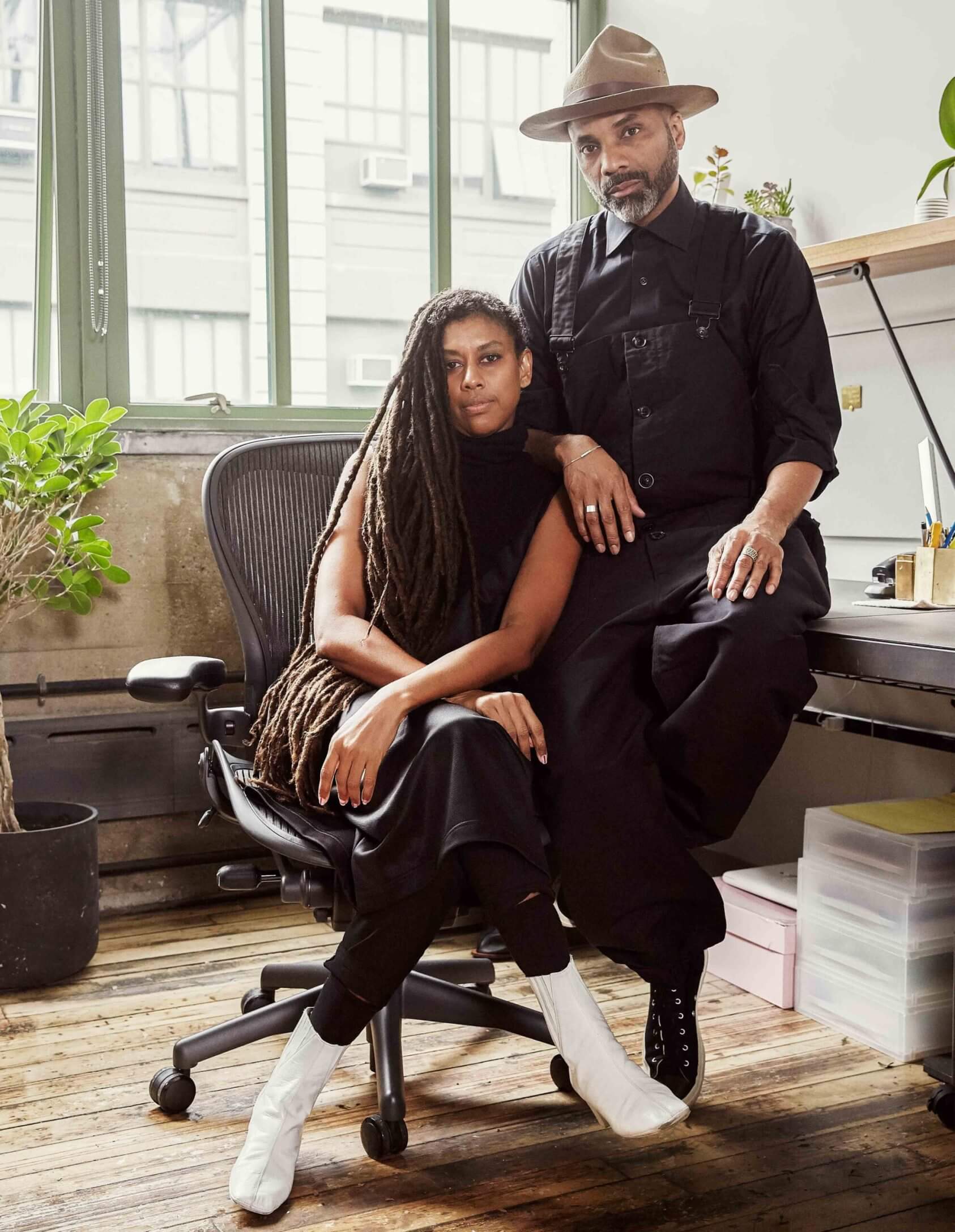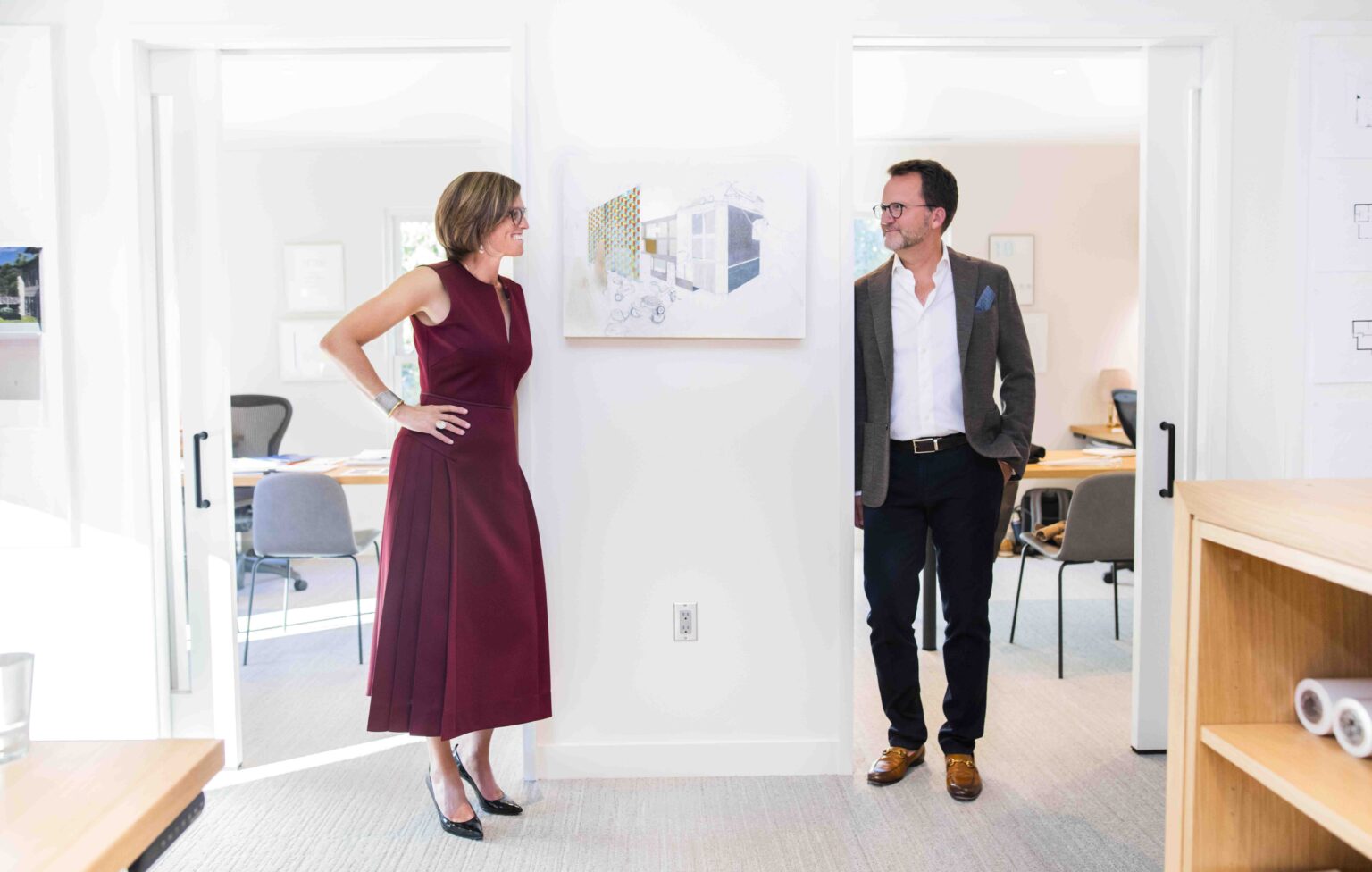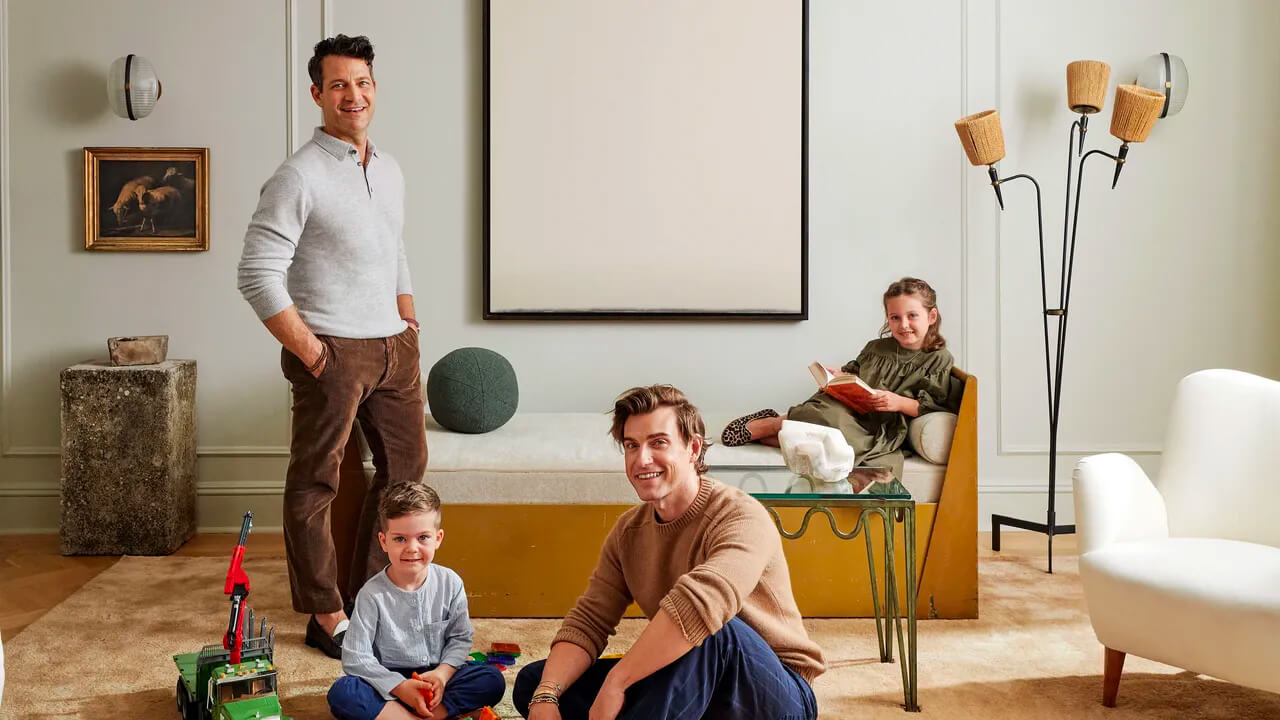Would you want to work with your significant other? How about living with your interior design partner? What happens when the lines between these two relationships blur? Sometimes real-life couples yield intensely successful creative partnerships in business. Think: Charles and Ray Eames, Florence and Hans Knoll, Lucy and Desi, Sonny and Cher. But what’s the secret to collaborating with your significant other effectively in life and work? Studio Designer checked in with four sets of designer partners who are also life partners to find out how they make it work.
A Natural Support System

In a design partnership as well as a marriage, recognizing and supporting each other’s strengths and weaknesses is vital. Essentially, running a household is like running a business on a small scale. Each partner has their own areas of expertise, they encourage and support each other, and they work together toward a common goal.
Real-life couple Anishka Clarke and Niya Bascom cofounded Brooklyn-based Ishka Designs as interior design director and creative director, respectively, and they acknowledge that when working together, they balance each other out. “Where I am weak, he is strong, and vice versa,” Clarke has said. “The beautiful thing about it, though, is that as a result, we’ve both grown as designers, business owners, and individuals, making us a stronger overall team.”
Clarke comes from a decade working in finance, with an interior design degree from FIT and an MBA from NYU Stern Business school, while Bascom’s experience was in photography and set design in the film industry. In 2007, they merged their talents and launched their firm together. Bascom has said that that their design partnership works because, “We respect each other’s approach to life, we tend to see things the same way, and we always have each others’ back. In addition, we think the overlap in our backgrounds allows for real ease and synergy in our work.”
Unspoken Understanding

This synergy between couples who live and work together—as life and design partners— manifests itself in an unspoken edge in the workplace. “Our shared experiences with travel, cultures, art, and people deepen our design dialogue and elevate us faster. There are things we don’t need to say, we just know because we have experienced it together—not as business partners, but as life partners,” explains Sarah Broughton principal at Rowland+Broughton Architecture / Urban Design / Interior Design in Aspen and Denver, who founded her firm with her husband John Rowland in 2003. “There are many things that we don’t need to discuss because we inherently know how each other will handle a situation. The intimacy of the relationship allows for an unspoken dialogue.”
According to Sofia Zimmerman, a partner at Brooklyn-based architecture studio Zimmerman Workshop and furniture design firm Ottra with her husband Adam Zimmerman, “In running a business, there are really good days and really rough days, and because we just get each other, we know how to ride the highs and lows together.” She adds, “We know each other so well, what our respective skills are, when to jump in to help, and when to hold back.”
Effectively Communicating

The key to any successful relationship—whether it’s with a significant other or a designer partner—is open and honest communication. The same interpersonal communication techniques that are essential in a marriage are crucial in a design partnership as well.
However, with most couples in life and business, at times communication could use work. “Candidly, we could stand to have a daily check-in, and if we were perfect, that would happen at the office. But sometimes the only time we get to talk is at home in the evening, and that can be tricky if the day was difficult,” Zimmerman admits. “One thing that helps us, even when we aren’t communicating properly, is that we have a clear sense of who handles what—from personnel matters to finance to sales and client services. So even if we are running in opposite directions, the potential for things slipping through the cracks is minimal.”
Distinguishing and Dividing Tasks

Knowing how to delineate tasks and not step on each other’s toes is essential when collaborating with a spouse, as well as a design partner. Zimmerman recognizes that she and her husband have very different skill sets—the actual design, technical details, and execution is his department, while she essentially handles the rest of the business. “We know what we’re each capable of, and that helps us collaborate in a productive way,” she explains. “I see our differences as a strength; there’s never that ‘too many cooks in the kitchen’ situation.”
Studio Designer client Nate Berkus and his husband Jeremiah Brent, each founders of their own namesake design firms, have collaborated on several television endeavors for HGTV, and in doing so, the two have learned that they collaborate extremely well in life, love, and design partnership. “The great thing about working with Jeremiah is how much I appreciate his eye and point of view—as a designer and a parent,” admits Berkus, who says that although sometimes their opinions differ, they can always find resolution. “Like the time he wanted to paint our bedroom black. I was against it, but it worked, and I ended up loving it. Our biggest fights are never about design.”
“We definitely push each other, but we love that tension creatively. And that’s usually where the most interesting things are born,” Brent has said. “We love working together. … We love creating. … And we both get to do what we love.”
Separating Work and Play—or Not?

When you love your work, and you work with your love, it’s natural to obscure the lines between business and pleasure, between design partnership and life partnership. And that’s OK. “Because we work and live together, there is an efficiency to how we do business. It is easy to be steps ahead because we can cover a topic while on a hike, for instance,” explains Broughton, who adds, “We collaborate by iterating together. We discuss design, solutions, and opportunities. We reflect on experiences and things we’ve seen. We often pull out trace paper to sketch out ideas together. This sometimes happens at night, on the weekend, or in the morning. It’s fluid and less scheduled. During the day, we’re typically collaborating with our team, so it’s less with just the two of us.”
Zimmerman recognizes that she and her husband not only bring work home with them, but they also bring home life to work quite often. “And we acknowledge we’re very privileged to do so,” she says. “We’ve invited the kids into the process a bit. They’ve helped us deliver furniture, come on site visits to create custom pieces, and even helped us at community events like Red Hook Open Studios.” She says that in the past she and her husband used to strive for balance, but they’ve come to realize it’s more realistic to strive for harmony. “There will always be a bit of a juggle,” she adds. “The challenge is to keep the tougher things at work and leave the lighter aspects for home life if we need.”
Similarly, Broughton says that working in their physical studios during the day and taking work home is how she and her husband work effectively. “We designed our home to encourage our creativity, and for us, balance is merging the personal and professional,” she says. “We don’t need to separate them because our career is all-encompassing and inspiring. And at our core, we believe in working hard and playing hard. The play is critical to our process because it keeps us fresh and having fun!”
Broughton adds, “I love working with John and could not imagine it any other way! We both have equal passion for design and our careers, and we share a curiosity about life. We continue to grow together and seek out opportunities to evolve.”
Want to learn more about Studio Designer?
Email info@studiodesigner.com, or register for our weekly demo. We can’t wait to connect.
Studio Designer is the leading digital platform for Interior Designers managing and growing their design businesses. Featuring fully integrated project management, time billing, product sourcing, and accounting solutions for the interior design industry.
Featured image: Sarah Broughton with her husband John Rowland of Rowland+Broughton Architecture
